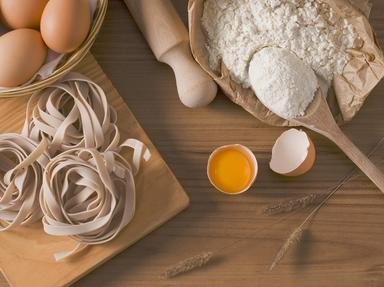Quiz Answer Key and Fun Facts
1. What tool do chefs use to be sure that meat is cooked to the proper temperature?
2. What is the process that results in the albumin in an egg turning from clear to opaque white?
3. What are the three main phases in ice cream?
4. When a recipe calls for a cup of water, why doesn't it matter whether you measure 8 (UK) fluid ounces or 8 avoirdupois ounces?
5. What causes browning of food when baked in a conventional oven?
6. What causes the leavening effect when baking powder and/or baking soda are added to dough or batter?
7. What physical change occurs when butter is churned?
8. The first step in cheese making involves adding rennet to cream or milk. What is created by the addition of the enzymes in rennet?
9. "There's always room for Jell-O." Jell-O is a popular brand of gelatin dessert. Why doesn't this dessert gel when fresh or canned pineapple is added?
10. Can you increase the temperature of boiling water?
Source: Author
drbabe
This quiz was reviewed by FunTrivia editor
WesleyCrusher before going online.
Any errors found in FunTrivia content are routinely corrected through our feedback system.

